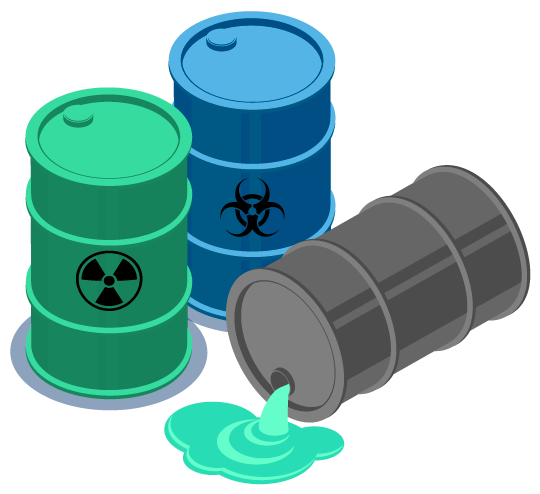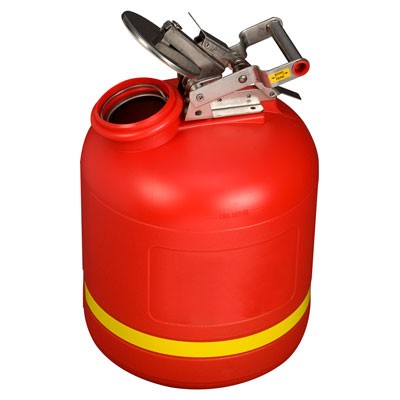Industrial Wastewater Treatment: Custom Solutions for Complex Wastewater Obstacles
Industrial Wastewater Treatment: Custom Solutions for Complex Wastewater Obstacles
Blog Article
How Liquid Waste Disposal Works: A Comprehensive Summary of Methods and Technologies Used

Summary of Fluid Waste Kind
The intricacy of fluid waste types necessitates an extensive understanding of their attributes and ramifications for disposal. Liquid waste can extensively be classified into a number of types, including commercial, municipal, agricultural, and hazardous waste. Each group shows distinctive buildings, requiring specific monitoring methods to alleviate environmental and health risks.
Industrial fluid waste stems from producing processes and often includes a variety of impurities, such as hefty metals, solvents, and natural compounds. Community fluid waste, mainly consisting of wastewater from homes and industrial establishments, contains natural matter, nutrients, and microorganisms (industrial wastewater treatment). Agricultural liquid waste, consisting of runoff from ranches, may contain fertilizers, chemicals, and animal waste, posturing dangers to water top quality and ecological communities
Hazardous fluid waste is defined by its poisoning, sensitivity, or prospective to trigger injury. This classification consists of compounds like acids, bases, and particular chemicals that require stringent handling and disposal procedures. Understanding these varied liquid waste kinds is vital for developing efficient disposal methods and making certain compliance with ecological policies. Correct classification and characterization are necessary for implementing ideal treatment methods and minimizing the negative influences on public health and wellness and the environment.
Physical Therapy Approaches

Screening is the initial action, where larger particles and particles are eliminated from the fluid waste using displays or grates. In sedimentation containers, larger bits work out at the base, creating a sludge layer, while the clarified fluid can be further treated.
Purification is one more vital method that entails passing the fluid via porous materials, such as sand or membrane layers, to capture smaller sized fragments. This action enhances the top quality of the liquid, making it ideal for subsequent treatment procedures.

Chemical Treatment Techniques
Chemical therapy techniques are essential for successfully managing fluid waste, specifically in attending to dissolved and colloidal pollutants that physical approaches may not appropriately get rid of. These methods utilize different chemical representatives to neutralize, precipitate, or change harmful substances right into much less hazardous kinds.
One common approach is coagulation and flocculation, where chemicals such as alum or ferric chloride are contributed to advertise the gathering of put on hold particles. This process improves sedimentation, permitting simpler elimination of the resulting sludge. In addition, oxidation processes, employing agents like chlorine or ozone, are utilized to damage down intricate natural compounds and pathogens, making the waste safer for discharge or additional therapy.
Neutralization is an additional critical technique, which changes the pH of acidic or alkaline waste streams to neutral levels, avoiding prospective injury to downstream systems and the setting. In addition, advanced oxidation processes (AOPs) use mixes of oxidants and ultraviolet light to deteriorate persistent toxins, achieving a higher degree of therapy performance.
Organic Therapy Procedures
Organic therapy procedures play an essential function in the administration of liquid waste by using microbes to decay natural issue and minimize pollutant levels. These procedures can be generally classified right into cardiovascular and anaerobic treatments, each employing certain microbial neighborhoods to accomplish effective waste degradation.
Cardio therapy includes using oxygen to assist in the break down of organic products by microorganisms. This process is frequently carried out in triggered sludge systems, where aeration tanks give a favorable atmosphere for microbial growth, leading to the oxidation of natural contaminants. The resultant biomass can be separated from dealt with effluent with sedimentation.
On the other hand, anaerobic treatment takes place in the absence of oxygen, relying upon various bacteria to damage down raw material. This technique is especially helpful for high-strength waste, as it generates biogas, a sustainable power source, while reducing sludge manufacturing. Technologies such as anaerobic digesters are frequently used in community and commercial applications.
Both cardio and anaerobic organic treatments not just reduce the ecological effect of fluid waste however additionally help with source recovery, making them essential elements of lasting waste administration methods. Their efficiency, efficiency, and flexibility sustain Look At This their prevalent implementation across numerous industries.
Arising Technologies in Disposal
Cutting-edge approaches to liquid garbage disposal are swiftly developing, driven by innovations in i loved this technology and a boosting focus on sustainability. Amongst these arising innovations, membrane bioreactors (MBRs) have acquired grip for their capacity to incorporate organic treatment with membrane layer filtration, leading to high-quality effluent that can be reused in numerous applications. MBRs make it possible for smaller footprints and much more efficient operations contrasted to conventional systems.
One more appealing advancement is using anaerobic digestion integrated with nutrient recovery innovations, which not only treats liquid waste but also generates biogas and recuperates beneficial nutrients like nitrogen and phosphorus. This twin advantage improves resource efficiency and decreases environmental effect.
Furthermore, advanced oxidation processes (AOPs) are being taken on for the destruction visit this web-site of intricate natural contaminants. These methods utilize effective oxidants and stimulants to break down contaminants at the molecular level, supplying a very efficient service for challenging waste streams.
Additionally, the combination of synthetic intelligence and equipment understanding in waste administration systems is optimizing operational efficiency and anticipating maintenance, leading to lowered prices and enhanced ecological compliance. These technologies mirror a considerable shift in the direction of even more lasting and effective fluid waste disposal techniques.
Verdict
In conclusion, efficient fluid waste disposal demands an extensive understanding of different strategies and innovations. By continuously progressing these techniques, it becomes possible to deal with the growing difficulties linked with fluid waste, ultimately contributing to environmental protection and resource recuperation.
Liquid waste disposal is an important facet of ecological management, requiring a comprehensive understanding of different methods and innovations customized to various waste kinds. Fluid waste can generally be classified right into numerous kinds, consisting of commercial, local, farming, and unsafe waste. Agricultural fluid waste, consisting of drainage from ranches, might consist of fertilizers, chemicals, and animal waste, positioning risks to water quality and communities.
Different physical treatment methods play a vital role in managing fluid waste properly - industrial wastewater treatment.In verdict, reliable fluid waste disposal requires an extensive understanding of various strategies and modern technologies
Report this page